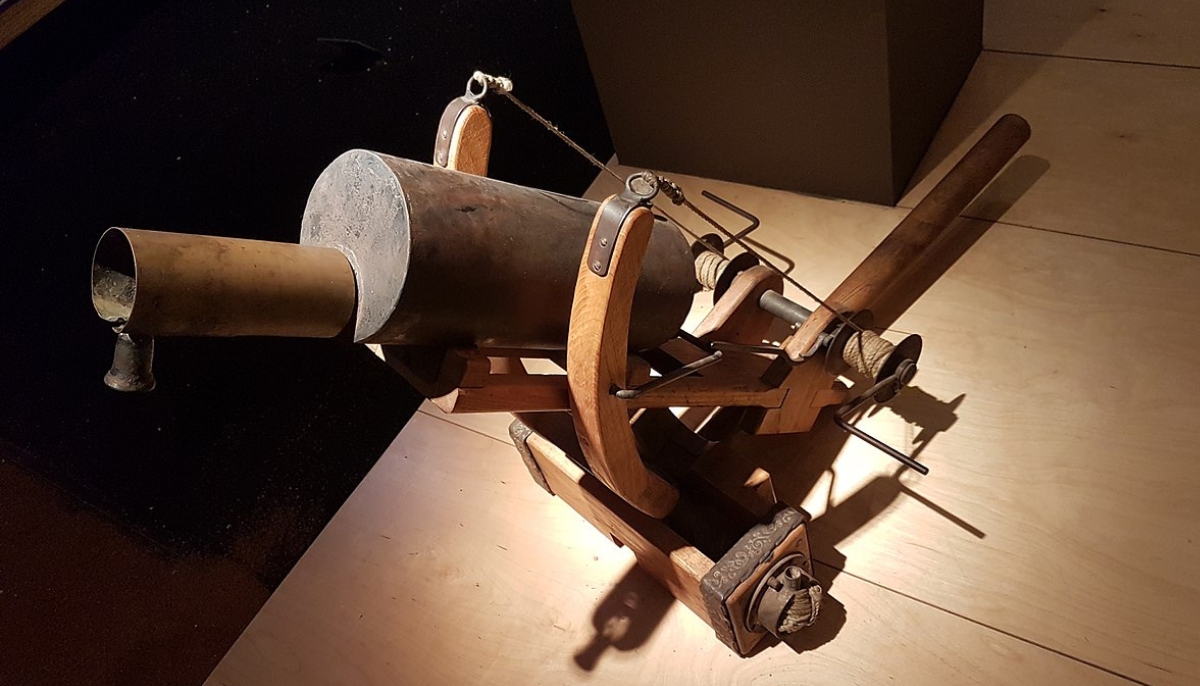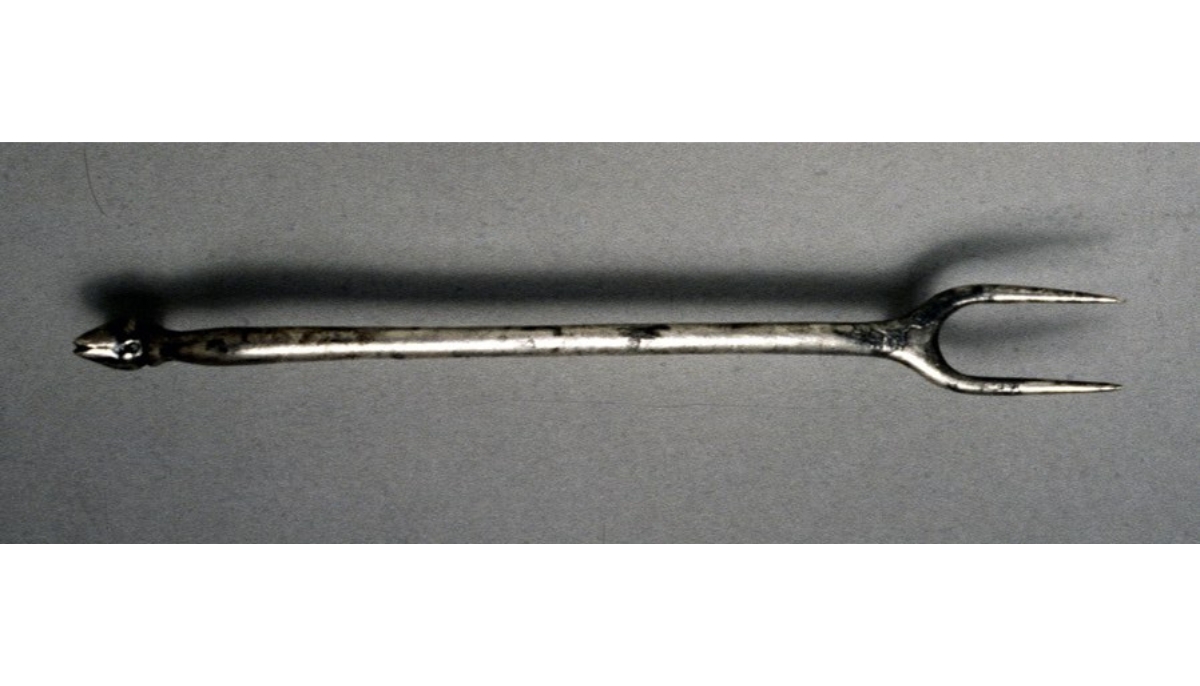Discover the remarkable contributions of the Byzantine Empire that have shaped our modern world in surprising ways.
Byzantine inventions have left an indelible impact on human history, from advancements in military technology to everyday items on your dinner table.
This article delves into fascinating innovations such as Greek Fire, pendentive dome architecture, communication beacons, and even the origin of feta cheese and the fork.
Read on to explore how Byzantine ingenuity has influenced various aspects of our lives today.
1. Greek Fire: The Ancient Superweapon

Picture this: the year is 672, and the Byzantine Navy is gearing up for battle. What’s their secret weapon? Greek Fire. This flaming concoction wasn’t just a hit at parties but a military game-changer.
The recipe was a closely guarded state secret. Even today, we’re not exactly sure what went into it. Most bets are on crude or refined petrol sourced from the Black Sea region. Imagine it as the ancient world’s version of napalm.
The sight of Greek Fire was nothing short of terrifying. Once lit, it stuck to ships, shields, and unfortunate soldiers, making it a nightmare for any opposing army. But Greek Fire wasn’t just a one-trick pony. Oh no, this leads us to our next topic…
2. Flamethrowers: Unleashing the Beast

So you’ve got this fire that can’t be easily put out. How do you use it? In come the flamethrowers, attached directly to naval ships.
A siphon system would hurl Greek Fire onto enemy vessels, turning sea battles into fiery hellscapes. Emperor Alexios I even took it up a notch by installing lion-shaped tubes on ship prows, spewing fire as if the beasts themselves were vomiting flames.
Historical accounts describe a complex setup. A furnace at the ship’s front, a copper vessel, and a bronze tube. It’s like a medieval DIY project that could singe your eyebrows off.
And let’s not forget its pivotal role in 678, when the Byzantine fleet used it to demolish the Umayyad navy in the Sea of Marmara. But wait, there’s more!
3. Grenades: The Throw and Go Byzantine Invention

By the reign of Leo III in 717 AD, the Byzantines had another bright idea. What if Greek Fire could be portable?
Enter grenades, ceramic jars filled with the infamous fire. These became the go-to during the Crusades and continued to see action until the Mamluk era.
Easy to throw and devastating upon impact, these grenades had a grip for short-range throws. But don’t let that fool you. They were also hurled long-distance using catapults or trebuchets, ignited before launch, or by fire arrows on impact. Talk about a hot potato.
The Byzantines knew how to bring the heat from naval warfare to handheld explosives.
4. Hospitals: Healing the Flames of War
So you’re mastering Greek fire and deploying it via flamethrowers and grenades. Next, you’ll need a plan for the aftermath. Enter Byzantine hospitals, perhaps one of the empire’s most humane innovations.
These weren’t just revamped Roman army clinics but public hospitals open to the poor and needy. Funded by philanthropy and initially run by the church, these establishments marked the dawn of modern healthcare.
The first of these was set up between 344 and 358 AD by Leontius of Antioch. These early hospitals were more than just buildings; they were a statement.
A deacon named Marathonius saw hospitals as key to improving the aesthetics and functionality of Byzantine cities. And here’s a kicker: they were mainly used by the poor.
Over time, the hospital became as common as any other public building. By the 12th century, hospitals were dispensing medicine to walk-in patients.
Experts believe the Byzantine Empire had over 169 hospitals, with the larger ones in Constantinople boasting over 200 beds.
So next time you find yourself in a hospital, you know whom to thank.
5. Counterweight Trebuchet: The Ultimate Siege Engine

From healing the wounded, let’s pivot to making some—strategically, of course. The counterweight trebuchet, probably a Byzantine brainchild, was the devastating darling of medieval warfare.
It evolved from the simpler, man-powered traction trebuchet and had one primary feature: it could launch heavier projectiles further than any other siege engine of its time.
Did the Byzantines invent it? That’s still up for debate, but evidence hints at its early use in Byzantine military campaigns as far back as 1165. In fact, illustrations from 1270 showcase fixed counterweight trebuchets at sieges. So it’s likely the Byzantines either invented it or significantly contributed to its development.
This siege weapon changed the game completely. This was the go-to machine for tearing down walls and instilling fear, from the sieges of Byzantine cities to the Crusader battles. It wasn’t just a war engine but a technological marvel that turned the tides of medieval conflict.
6. Pendentive Dome Architecture, the Byzantine invention that built the Hagia Sophia

Pendentives revolutionized dome construction, and nowhere is this more evident than in the Hagia Sophia.
A pendentive is a triangular segment of a sphere that permits a circular dome to sit atop a square room. This game-changer in architecture replaced earlier methods like corbelling and squinches.
Pendentives distribute the dome’s weight to the building’s four corners, making larger and more stable domes possible.
The Hagia Sophia in 537 AD became a shining example of this innovation. With its colossal dome, it blew people’s minds and set the tone for architectural possibilities for centuries to come.
7. Byzantine Communication Beacons: The Ancient Hotline
Now, let’s talk about the Byzantine Empire’s hotline, which wasn’t a phone line but a semaphore system of beacons.
This network was crafted so intelligently that messages could traverse a whopping 450 miles in just an hour! Set up during the reign of Emperor Theophilos by Leo the Mathematician, the system used two water clocks at each terminal to synchronize the sending of specific messages at specific times.
A bonfire lit on the first beacon would signal an event that was then rapidly transmitted to the capital, Constantinople.
It was the ancient inspiration for the warning beacons of Gondor from The Lord of the Rings! The beacon system demonstrated the Byzantine Empire’s focus on rapid and efficient communication, which was crucial during the Arab-Byzantine wars.
8. Ship Mills: Floating Factories of Flour

Belisarius, the Eastern Roman general, was in a real pickle during the 537 siege of Rome. With Goths cutting off supply routes and aqueducts, he turned to an innovative solution: ship mills.
These were essentially water wheels slapped onto boats, anchored on the Tiber River. Their purpose? To grind grain into flour. It was such a successful idea that it sailed its way to Paris, Geneva, and Dijon within decades.
They even made a splash in the Islamic world. By the 10th century, shipmills in Iraq were churning out an astonishing 10 tons of flour daily! This technology was especially useful in regions near strong currents and survived in Europe well into the 19th century.
9. Feta Cheese: No Joke, It’s A Culinary Marvel
Sure, it might be funny to think of cheese as an invention, but feta cheese has its roots in the Byzantine Empire.
Known as “prósphatos” in ancient texts, this tangy, crumbly delight was produced by the Cretans and Thessalians. It’s the kind of cheese that’s equally at home in a Greek salad or folded into a savory pastry.
So, the next time you enjoy a slice, remember that you’re partaking in a treat that’s been around for centuries.
10. The Fork: Making Feta Even Easier to Eat

Ah, the fork! This utensil may seem commonplace now, but back in the 7th century, it was a luxury item among Byzantine nobility.
Introduced to Western Europe by Maria Argyropoulina through her marriage, the fork initially shocked Venetians. They ate with their hands and found the fork to be almost heretical.
One clergy even claimed that it was an insult to God’s natural design. It’s funny how something so controversial then is so indispensable now, especially when you’re stabbing into a piece of feta cheese!
The Byzantine Empire was a hotbed of innovation, giving us game-changing technologies and cultural staples that we often take for granted today.
So the next time you enjoy a forkful of feta or learn about ancient engineering feats, give a nod to the Byzantines. They’ve shaped our world in more ways than one.






